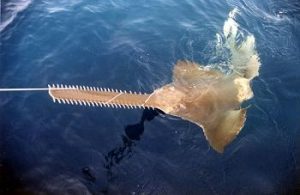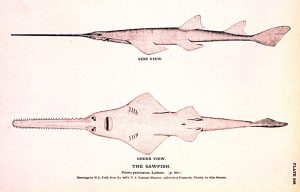The critical role mangroves play with regards to ocean health
By Elana Rusnak, SRC Intern
What are mangrove forests?
There are many types of mangrove trees, but the three most common are the Red mangrove, White mangrove, and Black mangrove.
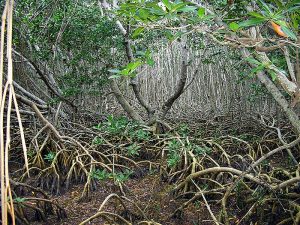
Figure 1: A mangrove forest in Ohio Key Florida Keys National Wildlife Refuge. FL photo courtesy of Phil M. C., February 19th, 2012. U.S. Fish and Wildlife Service Headquarters.
Red mangroves are distinguished by their large arrays of prop roots, which are long roots that may stem out from half way up the tree to reach the water and soil underneath. They are extremely important with regards to gas exchange and allowing the trees to live in sediments with very low oxygen levels. This is what makes mangroves so distinct—they not only live in salty, harsh conditions, but they thrive in them thanks to their unique adaptations. The smallest roots that come off the main prop roots aid in stabilizing the fine silts and sands on top of the soil layers, as well as maintain both water clarity and quality.
White mangroves can take the form of either trees or shrubs, and their bark is white and relatively smooth. They too have long root systems but tend not to be as extensive as Red mangroves.
Black mangroves look somewhat different from the previous two types in that they have horizontal cable roots that extend out from the trees at or below water level, with little branches called pneumatophores sticking up out of the water’s surface. The leaves on this tree can have visible salt crystals on them due to the process by which the trees excrete the salt they take up with their root systems under the ocean’s surface.
These among other mangrove tree types cluster together along the Florida and Caribbean island coastlines in long ranges. These forests used to be extremely abundant years ago, but due to deforestation they have greatly declined, here and around the world.
Why are they important?
While mangrove forests may just look like a bunch of trees living on the edge of the water, they are far more multi-faceted than one may think. These large natural features protect coastlines from erosion, and actually aid in expanding them by collection of intertidal sediments. Lots of detritus (dead organic matter) gets caught in the root systems, providing not only a source of food for the organisms living there, but an extra layer of rich soil that maintains the forests themselves. These ecosystems are habitat to over 1300 species of animals. They provide areas for breeding, nesting, foraging, and shelter for both resident and travelling organisms.
Mangroves are well documented to be widely used as juvenile fish nurseries due to the protective nature of their root systems against harsher open-ocean conditions. Larger predators cannot easily maneuver through the smaller spaces, giving the young fish the time they need to feed and grow into a suitable adult ready to survive and succeed in an adult habitat. The large prop root systems of mangroves give shelter to both juvenile species as well as permanent species that spend their entire life cycle among the roots.
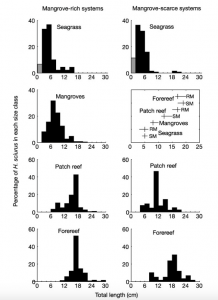
Figure 2: Statistical comparison of different environmental factors with regards to mangrove-rich and mangrove-scarce habitats (Mumby et al., 2004)
The above figure is from a paper by Mumby et al., in 2004. It shows that while the abundance of seagrass beds are not necessarily affected by the presence of mangrove forests, patch reef length is significantly greater while affected by mangrove forest, and that reef fish H. sciurus is more normally (healthily) distributed in size in mangrove-rich systems. The same paper also did a test on the distribution of Montastrea corals, which are coral heads that tend to have very high fish density. They found that mangrove extent was a dominant factor in structuring these reef communities, and that they were integral in community structure and frequently exceeded the influence of coral reefs in that regard. This shows the absolute importance of mangrove systems in keeping and maintaining the health of various other ecological systems surrounding them.
Why should I care?
As stated previously, in Florida and the Caribbean, mangroves used to have wide expanses of forests protecting the coastlines and creating these important habitats for many creatures, terrestrial and marine alike. However, human influence and deforestation has caused a significant decline in area coverage of these important ecosystems. Mangroves, in fact, are one of the most threatened tropical marine ecosystems worldwide, with greater than a 35% global loss rate. With such a steep decline, it is possible to also see the declining health of the coastal systems that mangroves protect, as well as the erosion of the general coastlines that used to be so expansive. With the lack of mangrove forests, all manner of species are also experiencing population declines.
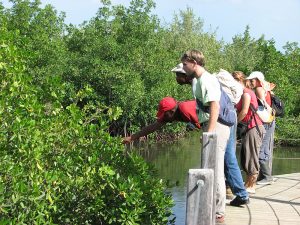
Figure 3: Young conservationists study mangroves at SCSCB training. Credit: SCSCB, November 13th, 2007. U.S. Fish and Wildlife Service Headquarters.
Humans have a tendency to claim whatever area they want and build houses, malls, marinas, etc. over the natural habitat many animals claim as their home. If this trend continues, mangrove forests could be wiped out entirely, and the nursery and permanent habitats for a multitude of species could vanish. This in turn could have many impacts on our lives, such as: smaller fish populations of species we eat (nowhere for their juveniles to be safe), eroding coastlines (no protection from a wall-like mangrove forest), and an overall decrease in the natural and beautiful species native to particular areas that are integral for their survival. Any amount of mangrove loss consequently means a loss of ecological, economic, and conservation functions. Populations of fish that we eat will decline, which will be detrimental to the already above-carrying capacity fishing industry.
While it may seem that this is a far-away problem in the future, more advanced and supported conservation efforts need to begin and be maintained now in order for this precious ecosystem to survive. It is so important to learn what these habitats do for our world so we can begin to teach others how to care for them and help save such an integral habitat for so many different organisms.
References:
Marine Spatial Ecology Laboratory, School of Biological and Chemical Sciences, University of Exeter, Prince of Wales Road, Exeter EX4 4PS, UK
Mumby, P. J., Edwards, A. J., Arias-Gonzalez, E., Lindeman, K. C., Blackwell, P. G., Gall, A., . . . Llewellyn, G. (2004). Mangroves enhance the biomass of coral reef fish communities in the Caribbean. Nature, 427, 533-536. Retrieved March 18, 2016.
U.S. Fish and Wildlife Service. (n.d.). Mangroves, Multi-species Recovery Plan for South Florida (pp. 3-519-3-545).
https://www.fws.gov/verobeach/MSRPPDFs/Mangroves.pdf
Valiela, I., Bowen, J. L., & York, J. K. (2001). Mangrove Forests: One of the World’s Threatened Major Tropical Environements. BioScience, 51(10), 801-815. Retrieved March 18, 2016.

